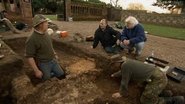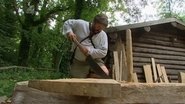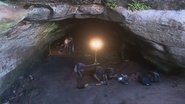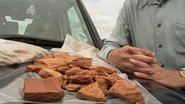-

-
-
Time Team : Season 12
-
Air date: 02 Jan '05 - 13 episodesTime Team is a British television series which has been aired on British Channel 4 from 1994. Created by television producer Tim Taylor and presented by actor Tony Robinson, each episode featured a team of specialists carrying out an archaeological dig over a period of three days, with Robinson explaining the process in layman's terms. This team of specialists changed throughout the series' run, although has consistently included professional archaeologists such as Mick Aston, Carenza Lewis, Francis Pryor and Phil Harding. The sites excavated over the show's run have ranged in date from the Palaeolithic right through to the Second World War. In October 2012 Channel 4 announced that the final series would be broadcast in 2013. Series 20 was screened in January–March 2013 and a number of specials are planned to be screened into 2014.
-
-
List of Episodes (13)
-
Time Team (1994)

-
1. Chenies Manor, Buckinghamshire - The Manor That's Back To Front
02 Jan '05In 1534 Henry the Eighth visited this manor house in Buckinghamshire. The first of many visits by the king and his daughter Elizabeth. But the owner knew that the royals expected only the biggest and the best. So he had his home transformed into a palace. But magnificent though this Tudor building is, it’s hardly big enough to support the king and his entourage of over 300 courtiers, it must have been at least twice this big. So where’s the rest of it, and what exactly does it take to build a
-
Time Team (1994)

-
2. Nether Poppleton, Yorkshire - The Monastery And The Mansion
09 Jan '05This is the village of Nether Poppleton just outside York. As you can see most of the houses are modern, some are Victorian a few are eighteenth or at a push seventeenth century. Up here, it looks very different. Even I could recognize a traditional medieval village layout with the main street running up to the church and lots of different plots running off it. And those earthworks to the side of the church are an officially registered medieval site. But the locals think it’s older. They think
-
Time Team (1994)

-
3. Preston, Lancashire - The Bombers In The Marsh
16 Jan '05Sixty years ago this coastal marsh near Preston in Lancashire was the scene of a tragedy. A group of American A-26 bombers fresh of the production line were on their way to bases in France, but two of them didn’t make it. Shortly after take-off they crashed and all three crew members died. So what went wrong? Over the next three days, we’re going to use archaeological techniques on what’s essentially an air crash investigation. We’re going to locate and excavate key parts of the wreckage in ord
-
Time Team (1994)

-
4. Drumlanrig, Dumfries and Galloway - Fighting On The Frontier
23 Jan '05Time Team get invited to all sorts of places these days, but they don’t come any grander than this. This is Drumlanrig Castle near Dumfries in Scotland. But that’s not for us typical Time Team, what we’re interested in is something that’s been discovered round the back in the garden. There’s not much to see on the ground here, apart from a few lumps and bumps but look, this photo was taken from the air during a particularly dry summer and we see all these strange shapes and lines. The experts
-
Time Team (1994)

-
5. Northborough, Peterborough - A Neolithic Cathedral?
30 Jan '05The Time Team is invited to a huge circular crop mark near Peterborough, referred to as a Causewayed Enclosure by archaeologists. Huge ditches mark the area, which date the site at around 6,000 years old. Some believe the ditches to be evidence of farming, others that they are of religious origin. Francis Pryor joins the team to get to the bottom of the mystery in just three days.
-
Time Team (1994)

-
6. River Hamble, Hampshire - Grace Dieu, In Search Of Henry V's Flagship
06 Feb '05Under these murky waters on the River Hamble lies some remains of a medieval ship, but this isn’t just any old ship. We’re hoping this is the Grace Dieu, Henry the Fifth’s huge flagship. In fact it was so big that no bigger boat was built for another 200 years. But amazingly she only ever had one voyage and after Henry the Fifth’s death she was just abandoned and left to rot. So, was she too big to sail, was she a failure, and how much of her lies under here? We’ve got just three days to find
-
Time Team (1994)

-
7. Standish, Gloucestershire - Going Upmarket With The Romans
13 Feb '05In autumn 1999, Paul Bevon found a Roman coin in this field in Standish in Gloucestershire. And he found another one, and another and an obsession was born. In five years, one archaeology course and several trenches later, he’d amassed boxes and boxes of Roman and Iron Age finds like these broaches, these tesseri, this Iron Age axe, all this building material. There’s clearly loads of archaeology here but what exactly is it. Well there’s only so much that one man however driven can find out wi
-
Time Team (1994)

-
8. Wemyss, Fife - Picts And Hermits: Cave Dwellers Of Fife
20 Feb '05Yesterday morning we came here to the Fife coast to look at some caves which had been inhabited on and off for some thousands of years. The first one we looked at was Jonathan’s cave which is way back there and there’s some great Pictish carvings on the walls, but we put a couple of trenches in and we haven’t found anything particularly exciting. But one of our archaeologists was footling around down this cave and came up with something which everyone thinks, could be really exciting, and obvi
-
Time Team (1994)

-
9. St Osyth, Essex - Lost Centuries Of St Osyth
27 Feb '05Long ago, two Viking marauders captured a lonely nun called Osyth and they chopped her head off. But they say she then picked up her head, carried it back to her nunnery and died there. And this miraculous act of martyrdom earned her a sainthood and the pilgrims flocked in and the local village adopted her name and prospered. Well, that’s the story. This little town on the Essex coast is still called St. Osyth, but it’s real origins are a mystery and the locals have called in Time Team to help
-
Time Team (1994)

-
10. South Perrott, Dorset - The Puzzle Of Picket's Farm
06 Mar '05Thirty years ago the Legg family took over this farm in West Dorset, almost immediately they discovered that one end of this field was difficult to plough and they put it down to the stony soil. But then earlier this year Roman finds started to crop up all over the field. Roof tile, pottery, Roman coins, broaches, what’s going on? The Legg’s are itching to know. Is there a Roman building here that could account for their broken ploughs. Time Team’s got just three days to find out and let them
-
Time Team (1994)

-
11. Skipsea, Humberside - Norman Neighbours
01 Mar '05Tony: Meet a real Time Team fan, this is Francis Davis who lives up here in Skipsea in blowy East Yorkshire, and to put it mildly your fairly interested in what was going on in this field aren’t you. Francis: Absolutely. Tony: Why, it looks like all your other fields? Francis: Except they plough deeper one year and we turned up all these finds. Tony: Which are really fantastic. We’ve got everything from this prehistoric arrowhead, right through to a Medieval. In fact, Francis was so excited
-
Time Team (1994)

-
12. South Shields, Tyneside - Tower Blocks And Togas
20 Mar '05Somewhere under this grass is a Roman cemetery containing the remains of soldiers from all over the empire who were stationed here in South Shields. We know it’s here because Victorian builders found loads of bodies. The fort was in use for 300 years, so the cemetery could be huge, and it’s not just full of your average Roman squaddies. There were troops from Spain & Africa there is even an intriguing reference to what could be a unit of Iraqi’s. There is just one problem, the whole thing is
-
Time Team (1994)

-
13. Hanslope, Milton Keynes - Animal Farm
03 Apr '05800 years ago, England was a far from green and pleasant land. Civil war was raging between King John and a bunch of rebellious nobles, and among those nobles were the Mordwits who owned most of the land around here. A photograph of this field showed these rather unusual crop marks. Archaeologists thought they were probably prehistoric, pretty standard stuff. But some amateur archaeologists decided to have a look and blow me, they’ve found this twelfth century building, along with some lovely f
-




















